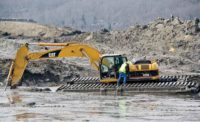New clean-air regulations from the Environmental Protection Agency will force electric utilities in the eastern U.S. to spend tens of millions of dollars on pollution-control equipment to trim sulfur dioxide and nitrogen oxide emissions from coal-fired powerplants.

EPA's Cross-State Air Pollution Rule, announced on July 7, requires utilities in 27 states to cut emissions or buy allowances from the market, starting in 2012. Even tougher rules take effect in 2014, when EPA and state actions will require SO emissions to be cut 73% from 2005 levels and NOx emissions to drop by 54%. EPA's new rule targets SO and NOx because they can cross state lines, react with the atmosphere and contribute to harmful smog and soot levels.
The new rule's short notice and inclusion of some unexpected states, especially Texas, could be troublesome, say Carl Weilert and Block Andrews, air-quality specialists at Burns and McDonnell, Kansas City, Mo.
“We are starting to get a sense of how difficult it is going to be,” Weilert says. Burns and McDonnell is working with some Texas utilities to help them comply with the new rule. A 2010 EPA proposed draft did not include Texas. Weilert says if a utility company doesn't have a compliance plan lined up, it “literally might have to choose between paying a fine and meeting demand.”
Andrews says the rule means that, as a whole, Texas utilities must cut SO emissions by 200,000 tons in 2012. “A nearly 50% reduction in six months is physically impossible,” he says.
Many utilities have emissions-control projects in the pipeline that originally were planned to comply with EPA's 2005 Clean Air Interstate Rule, which a federal appellate court ordered to be revised. But many of those projects are not slated to be complete until 2015.
Andy Byers, an associate vice president at Black & Veatch, Overland Park, Kan., isn't as pessimistic about the rule's impact. He points out that it gives utilities many options for meeting pollution-reduction targets, either by buying allowances or running different plants in their portfolios. Many utilities, which already have begun to install pollution-control equipment, may be able to meet the targets.
Weilert, Andrews and Byers agree the new transport rule—along with an EPA regulation requiring maximum achievable control technology and a proposed rule on cooling water—make it harder for coal plants to be economical at a time when the price of natural gas is about equal to the price of coal. Byers says, “When all of those things are added together, it will force companies to install controls or repower their plants or retire them.”


Post a comment to this article
Report Abusive Comment